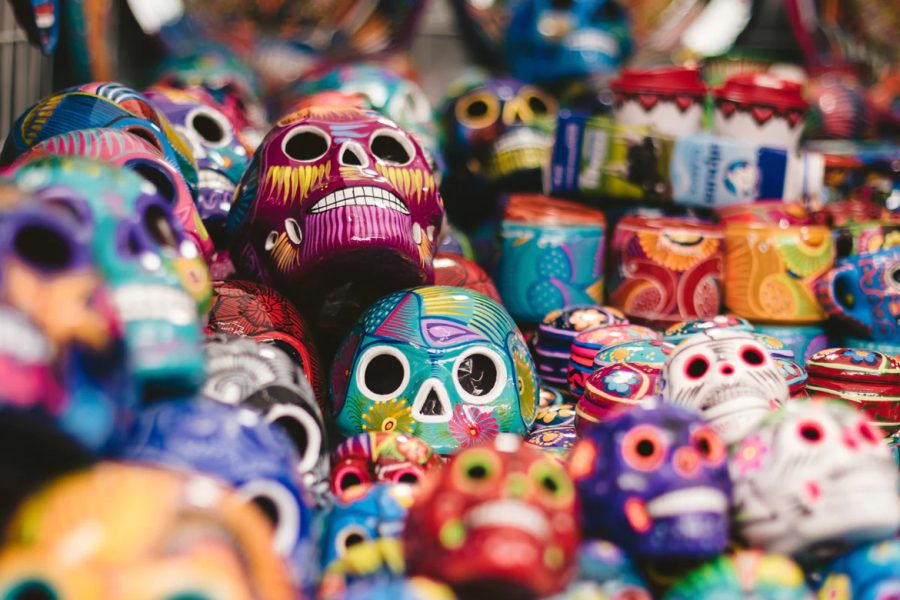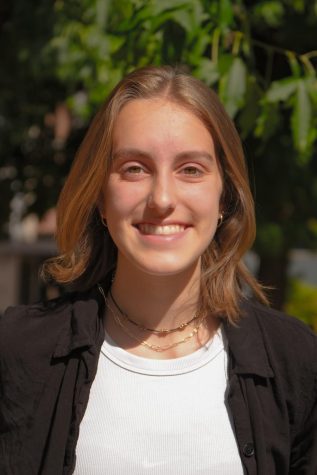Día De Los Muertos Is Not Halloween:
5 Facts About Día de los Muertos and How the Two Holidays Differ.
November 1, 2021
Día de los Muertos appears to be a celebration full of color, fun and skull makeup. Just like Halloween, right? Well, Not quite. While the two holidays may have similar characteristics on the surface, they have entirely different meanings and practices behind them. Here are the top 5 facts about Día de los Muertos, and how the two holidays are more different than they may seem.
Día de los Muertos is Celebrated on November 1st and 2nd.
Día de los Muertos isn’t actually celebrated on Halloween! It’s a two day celebration the two days after—November 1st and 2nd. The first day is when children who have passed away return to their families for 24 hours, and is called “Día de los Angelitos” (Day of the Little Angels). The second day is for the spirits of the adults to return, called “Día de los Difuntos” (Day of the Deceased). The spirits come home to be honored by their families with altars, food, and celebration.
Día de los Muertos was formed from a combination of Catholic and Aztec traditions.
The Aztec festival dedicated to the goddess Mictecacihuatl, or “Lady of the Dead”, was the basis for both Halloween and Día de los Muertos because it led to the creation of All Saints Day, a Catholic holiday celebrating the Saints of the church. From there, it branched in two directions—celebrating “All Hallows Eve,” the night before All Saints Day, and celebrating Día de los Muertos both on All Saints Day and the day after.
Those who celebrate often visit cemeteries or make altars to celebrate their loved ones.
To honor those who have passed away, those celebrating Día de los Muertos often create altars for their relatives, most often complete with photos, flowers, food, and candles. In most cases, altars are decorated with bright colors and objects that the family member loved during their life. Altars can be both public and private, with some being displayed in homes and others being found in areas such as public squares.
Symbols like marigolds, sugar skulls, and candles are central to the holiday.
While at first glance, objects placed on an altar may look like nothing more than a colorful symbol of death, there is more to each of the pieces than meets the eye. Marigolds are placed on many altars because of their bright orange color and strong smell, characteristics that are believed to help attract the souls to their altar. Sugar skulls, made of granulated sugar and decorated with icing, are there to both represent the lives of the people who have passed on and to symbolize the sweetness of life.
Día de los Muertos is not about fear.
When we think of Halloween, we often think of fear—haunted houses, scary costumes and horror movies, but Día de los Muertos isn’t about fear at all. Instead, it is a time of remembrance and often considered a celebration of life. During the holiday, families celebrate by going to parades or having large meals together, and recognizing the beauty that comes with being alive.
Día de los Muertos is an incredible celebration that deserves to stand on its own. It is a beautiful holiday of remembrance, spirit, and light. So when you see a sugar skull or an altar, don’t think of Halloween, think of the celebration of life. Happy Día de los Muertos!
Want to read more? Check these links!
https://dayofthedead.holiday/traditions/10-facts-to-know-about-day-of-the-dead
https://spanishmama.com/differences-between-halloween-and-day-of-the-dead/
https://www.history.com/topics/halloween/history-of-halloween



